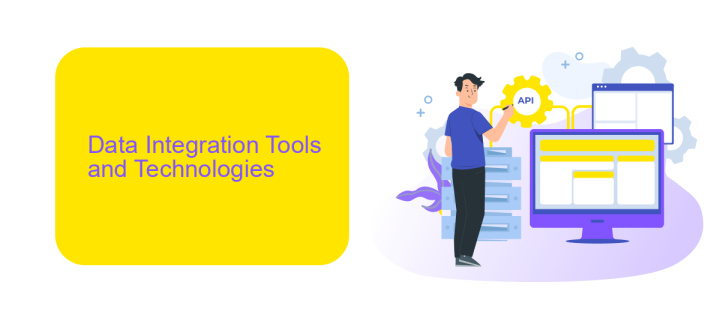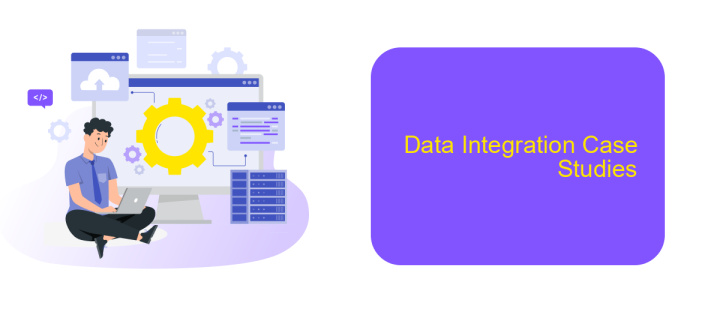Data Integration Techniques
Data integration is a critical process in modern data management, enabling seamless access and analysis of data from diverse sources. This article explores various data integration techniques, including ETL (Extract, Transform, Load), data virtualization, and data federation. Understanding these methods is essential for organizations aiming to harness the full potential of their data and drive informed decision-making.
Data Integration Challenges
Data integration poses several challenges that organizations must navigate to achieve seamless data flow across systems. These challenges can significantly impact the efficiency and effectiveness of business operations.
- Data Quality: Ensuring the accuracy, consistency, and completeness of data from multiple sources is a critical challenge.
- Data Security: Protecting sensitive information during the integration process is paramount to prevent breaches and data loss.
- Scalability: As data volumes grow, maintaining performance and responsiveness becomes increasingly difficult.
- Compatibility: Integrating data from diverse systems and formats requires overcoming compatibility issues.
- Real-time Integration: Achieving real-time data integration demands robust infrastructure and efficient processing capabilities.
Tools like ApiX-Drive can help mitigate some of these challenges by providing a platform for automating data integration processes. ApiX-Drive enables seamless connections between various applications, ensuring data is transferred accurately and securely. Leveraging such tools can enhance data quality, improve security measures, and support scalability, thereby facilitating more effective data integration.
Data Integration Tools and Technologies

Data integration tools and technologies are essential for combining data from different sources into a unified view. These tools include ETL (Extract, Transform, Load) platforms such as Talend and Informatica, which facilitate the extraction of data from various sources, its transformation into a suitable format, and its loading into a destination system. Additionally, data virtualization tools like Denodo and data warehousing solutions like Snowflake play a crucial role in providing real-time access to integrated data without the need for physical data movement.
Another important category of data integration tools includes API integration platforms such as ApiX-Drive. ApiX-Drive simplifies the process of connecting various applications and automating data workflows without requiring extensive coding knowledge. This service supports a wide range of applications and offers pre-built connectors, making it easier for businesses to synchronize data across different systems seamlessly. By leveraging these advanced tools and technologies, organizations can ensure efficient data integration, leading to better decision-making and enhanced operational efficiency.
Data Integration Types

Data integration involves combining data from different sources to provide a unified view. There are several types of data integration techniques that organizations can use depending on their needs and existing infrastructure.
- Manual Data Integration: This method involves manually collecting data from different sources and consolidating it. It is time-consuming and prone to errors but can be useful for small datasets.
- Mediated Data Integration: In this approach, a mediator or middleware is used to fetch and integrate data from various sources. This method is more efficient and reduces the risk of errors.
- Application-Based Integration: This technique uses specialized software applications to integrate data. Tools like ApiX-Drive can automate and streamline the integration process, making it easier to manage large datasets.
- Uniform Data Access: This method provides a unified data access interface without physically merging the data. It is useful for real-time data access needs.
- Common Data Storage: This technique involves consolidating data into a single repository, such as a data warehouse, for easier access and analysis.
Choosing the right data integration technique is crucial for ensuring data accuracy, consistency, and accessibility. Tools like ApiX-Drive can significantly simplify the integration process, making it more efficient and reliable.
Data Integration Case Studies

Data integration case studies provide valuable insights into how organizations successfully merge disparate data sources to achieve unified, actionable insights. One notable example is a retail company that integrated its online and offline sales data to gain a comprehensive view of customer behavior. By using data integration techniques, they were able to tailor marketing campaigns more effectively and optimize inventory management.
Another case involves a healthcare provider that unified patient records from various departments to create a holistic view of patient history. This integration enabled more accurate diagnoses and improved patient care. The healthcare provider used advanced data integration tools to ensure data consistency and reliability across all systems.
- A financial institution that combined data from multiple branches to streamline reporting and compliance.
- An e-commerce platform that integrated customer data from various touchpoints to enhance personalization and customer service.
- A logistics company that merged data from different tracking systems to improve delivery efficiency and customer satisfaction.
Services like ApiX-Drive play a crucial role in these integrations by providing a user-friendly platform to connect various applications and automate data flows. By leveraging such tools, organizations can significantly reduce the time and effort required to achieve seamless data integration.


Best Practices for Data Integration
Effective data integration begins with a clear understanding of the data sources and the specific needs of the organization. It's crucial to establish a robust data governance framework to ensure data quality, consistency, and security. Regularly updating and maintaining data mapping and transformation rules can help in minimizing errors and discrepancies. Utilizing automated tools like ApiX-Drive can simplify the process by providing seamless integration across various platforms and applications, ensuring real-time data synchronization.
Another best practice is to implement a scalable architecture that can handle increasing data volumes and complexity. This involves selecting the right integration techniques such as ETL (Extract, Transform, Load), ELT (Extract, Load, Transform), or real-time data streaming based on the use case. Monitoring and auditing the data integration processes continuously can help in identifying issues early and maintaining data integrity. Additionally, fostering collaboration between IT and business teams can lead to more effective data integration strategies and better decision-making.
FAQ
What is data integration?
Why is data integration important for businesses?
What are the common techniques used in data integration?
How can automation help in data integration?
What challenges are associated with data integration?
Apix-Drive is a universal tool that will quickly streamline any workflow, freeing you from routine and possible financial losses. Try ApiX-Drive in action and see how useful it is for you personally. In the meantime, when you are setting up connections between systems, think about where you are investing your free time, because now you will have much more of it.

